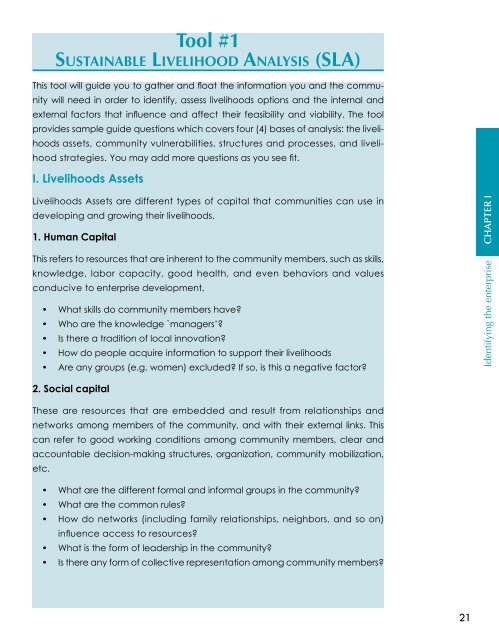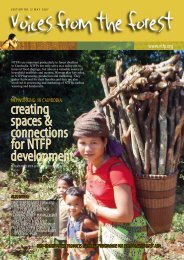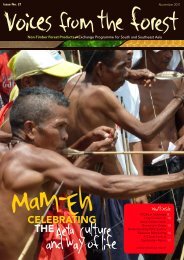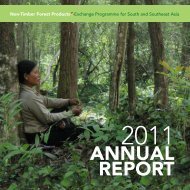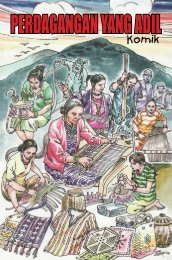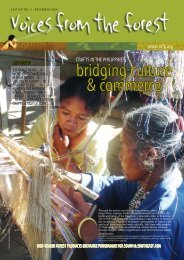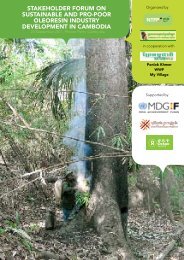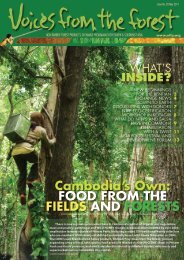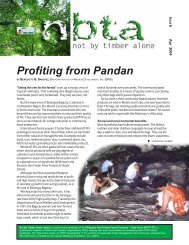Download PDF - Non-Timber Forest Products Exchange Programme
Download PDF - Non-Timber Forest Products Exchange Programme
Download PDF - Non-Timber Forest Products Exchange Programme
Create successful ePaper yourself
Turn your PDF publications into a flip-book with our unique Google optimized e-Paper software.
Tool #1<br />
Sustainable Livelihood Analysis (SLA)<br />
This tool will guide you to gather and float the information you and the community<br />
will need in order to identify, assess livelihoods options and the internal and<br />
external factors that influence and affect their feasibility and viability. The tool<br />
provides sample guide questions which covers four (4) bases of analysis: the livelihoods<br />
assets, community vulnerabilities, structures and processes, and livelihood<br />
strategies. You may add more questions as you see fit.<br />
I. Livelihoods Assets<br />
Livelihoods Assets are different types of capital that communities can use in<br />
developing and growing their livelihoods.<br />
1. Human Capital<br />
This refers to resources that are inherent to the community members, such as skills,<br />
knowledge, labor capacity, good health, and even behaviors and values<br />
conducive to enterprise development.<br />
• What skills do community members have<br />
• Who are the knowledge `managers’<br />
• Is there a tradition of local innovation<br />
• How do people acquire information to support their livelihoods<br />
• Are any groups (e.g. women) excluded If so, is this a negative factor<br />
Identifying the enterprise CHAPTER I<br />
2. Social capital<br />
These are resources that are embedded and result from relationships and<br />
networks among members of the community, and with their external links. This<br />
can refer to good working conditions among community members, clear and<br />
accountable decision-making structures, organization, community mobilization,<br />
etc.<br />
• What are the different formal and informal groups in the community<br />
• What are the common rules<br />
• How do networks (including family relationships, neighbors, and so on)<br />
influence access to resources<br />
• What is the form of leadership in the community<br />
• Is there any form of collective representation among community members<br />
21


